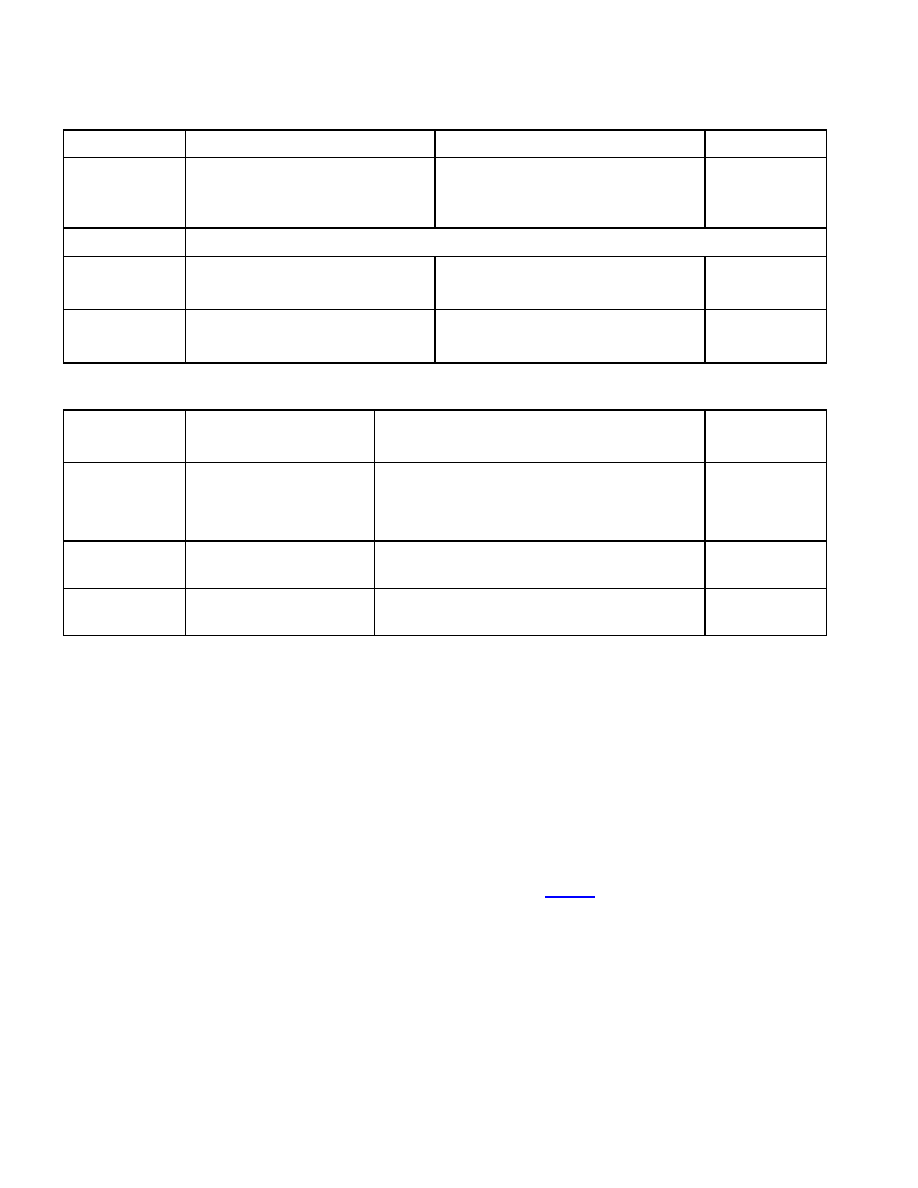- 您現(xiàn)在的位置:買賣IC網(wǎng) > PDF目錄1916 > DS34T102GN+ (Maxim Integrated Products)IC TDM OVER PACKET 484TEBGA PDF資料下載
參數(shù)資料
| 型號(hào): | DS34T102GN+ |
| 廠商: | Maxim Integrated Products |
| 文件頁(yè)數(shù): | 28/366頁(yè) |
| 文件大小: | 0K |
| 描述: | IC TDM OVER PACKET 484TEBGA |
| 產(chǎn)品培訓(xùn)模塊: | Lead (SnPb) Finish for COTS Obsolescence Mitigation Program |
| 標(biāo)準(zhǔn)包裝: | 30 |
| 類型: | TDM(分時(shí)復(fù)用) |
| 應(yīng)用: | 數(shù)據(jù)傳輸 |
| 安裝類型: | 表面貼裝 |
| 封裝/外殼: | 484-BGA 裸露焊盤(pán) |
| 供應(yīng)商設(shè)備封裝: | 484-HSBGA(23x23) |
| 包裝: | 托盤(pán) |
第1頁(yè)第2頁(yè)第3頁(yè)第4頁(yè)第5頁(yè)第6頁(yè)第7頁(yè)第8頁(yè)第9頁(yè)第10頁(yè)第11頁(yè)第12頁(yè)第13頁(yè)第14頁(yè)第15頁(yè)第16頁(yè)第17頁(yè)第18頁(yè)第19頁(yè)第20頁(yè)第21頁(yè)第22頁(yè)第23頁(yè)第24頁(yè)第25頁(yè)第26頁(yè)第27頁(yè)當(dāng)前第28頁(yè)第29頁(yè)第30頁(yè)第31頁(yè)第32頁(yè)第33頁(yè)第34頁(yè)第35頁(yè)第36頁(yè)第37頁(yè)第38頁(yè)第39頁(yè)第40頁(yè)第41頁(yè)第42頁(yè)第43頁(yè)第44頁(yè)第45頁(yè)第46頁(yè)第47頁(yè)第48頁(yè)第49頁(yè)第50頁(yè)第51頁(yè)第52頁(yè)第53頁(yè)第54頁(yè)第55頁(yè)第56頁(yè)第57頁(yè)第58頁(yè)第59頁(yè)第60頁(yè)第61頁(yè)第62頁(yè)第63頁(yè)第64頁(yè)第65頁(yè)第66頁(yè)第67頁(yè)第68頁(yè)第69頁(yè)第70頁(yè)第71頁(yè)第72頁(yè)第73頁(yè)第74頁(yè)第75頁(yè)第76頁(yè)第77頁(yè)第78頁(yè)第79頁(yè)第80頁(yè)第81頁(yè)第82頁(yè)第83頁(yè)第84頁(yè)第85頁(yè)第86頁(yè)第87頁(yè)第88頁(yè)第89頁(yè)第90頁(yè)第91頁(yè)第92頁(yè)第93頁(yè)第94頁(yè)第95頁(yè)第96頁(yè)第97頁(yè)第98頁(yè)第99頁(yè)第100頁(yè)第101頁(yè)第102頁(yè)第103頁(yè)第104頁(yè)第105頁(yè)第106頁(yè)第107頁(yè)第108頁(yè)第109頁(yè)第110頁(yè)第111頁(yè)第112頁(yè)第113頁(yè)第114頁(yè)第115頁(yè)第116頁(yè)第117頁(yè)第118頁(yè)第119頁(yè)第120頁(yè)第121頁(yè)第122頁(yè)第123頁(yè)第124頁(yè)第125頁(yè)第126頁(yè)第127頁(yè)第128頁(yè)第129頁(yè)第130頁(yè)第131頁(yè)第132頁(yè)第133頁(yè)第134頁(yè)第135頁(yè)第136頁(yè)第137頁(yè)第138頁(yè)第139頁(yè)第140頁(yè)第141頁(yè)第142頁(yè)第143頁(yè)第144頁(yè)第145頁(yè)第146頁(yè)第147頁(yè)第148頁(yè)第149頁(yè)第150頁(yè)第151頁(yè)第152頁(yè)第153頁(yè)第154頁(yè)第155頁(yè)第156頁(yè)第157頁(yè)第158頁(yè)第159頁(yè)第160頁(yè)第161頁(yè)第162頁(yè)第163頁(yè)第164頁(yè)第165頁(yè)第166頁(yè)第167頁(yè)第168頁(yè)第169頁(yè)第170頁(yè)第171頁(yè)第172頁(yè)第173頁(yè)第174頁(yè)第175頁(yè)第176頁(yè)第177頁(yè)第178頁(yè)第179頁(yè)第180頁(yè)第181頁(yè)第182頁(yè)第183頁(yè)第184頁(yè)第185頁(yè)第186頁(yè)第187頁(yè)第188頁(yè)第189頁(yè)第190頁(yè)第191頁(yè)第192頁(yè)第193頁(yè)第194頁(yè)第195頁(yè)第196頁(yè)第197頁(yè)第198頁(yè)第199頁(yè)第200頁(yè)第201頁(yè)第202頁(yè)第203頁(yè)第204頁(yè)第205頁(yè)第206頁(yè)第207頁(yè)第208頁(yè)第209頁(yè)第210頁(yè)第211頁(yè)第212頁(yè)第213頁(yè)第214頁(yè)第215頁(yè)第216頁(yè)第217頁(yè)第218頁(yè)第219頁(yè)第220頁(yè)第221頁(yè)第222頁(yè)第223頁(yè)第224頁(yè)第225頁(yè)第226頁(yè)第227頁(yè)第228頁(yè)第229頁(yè)第230頁(yè)第231頁(yè)第232頁(yè)第233頁(yè)第234頁(yè)第235頁(yè)第236頁(yè)第237頁(yè)第238頁(yè)第239頁(yè)第240頁(yè)第241頁(yè)第242頁(yè)第243頁(yè)第244頁(yè)第245頁(yè)第246頁(yè)第247頁(yè)第248頁(yè)第249頁(yè)第250頁(yè)第251頁(yè)第252頁(yè)第253頁(yè)第254頁(yè)第255頁(yè)第256頁(yè)第257頁(yè)第258頁(yè)第259頁(yè)第260頁(yè)第261頁(yè)第262頁(yè)第263頁(yè)第264頁(yè)第265頁(yè)第266頁(yè)第267頁(yè)第268頁(yè)第269頁(yè)第270頁(yè)第271頁(yè)第272頁(yè)第273頁(yè)第274頁(yè)第275頁(yè)第276頁(yè)第277頁(yè)第278頁(yè)第279頁(yè)第280頁(yè)第281頁(yè)第282頁(yè)第283頁(yè)第284頁(yè)第285頁(yè)第286頁(yè)第287頁(yè)第288頁(yè)第289頁(yè)第290頁(yè)第291頁(yè)第292頁(yè)第293頁(yè)第294頁(yè)第295頁(yè)第296頁(yè)第297頁(yè)第298頁(yè)第299頁(yè)第300頁(yè)第301頁(yè)第302頁(yè)第303頁(yè)第304頁(yè)第305頁(yè)第306頁(yè)第307頁(yè)第308頁(yè)第309頁(yè)第310頁(yè)第311頁(yè)第312頁(yè)第313頁(yè)第314頁(yè)第315頁(yè)第316頁(yè)第317頁(yè)第318頁(yè)第319頁(yè)第320頁(yè)第321頁(yè)第322頁(yè)第323頁(yè)第324頁(yè)第325頁(yè)第326頁(yè)第327頁(yè)第328頁(yè)第329頁(yè)第330頁(yè)第331頁(yè)第332頁(yè)第333頁(yè)第334頁(yè)第335頁(yè)第336頁(yè)第337頁(yè)第338頁(yè)第339頁(yè)第340頁(yè)第341頁(yè)第342頁(yè)第343頁(yè)第344頁(yè)第345頁(yè)第346頁(yè)第347頁(yè)第348頁(yè)第349頁(yè)第350頁(yè)第351頁(yè)第352頁(yè)第353頁(yè)第354頁(yè)第355頁(yè)第356頁(yè)第357頁(yè)第358頁(yè)第359頁(yè)第360頁(yè)第361頁(yè)第362頁(yè)第363頁(yè)第364頁(yè)第365頁(yè)第366頁(yè)

____________________________________________________ DS34T101, DS34T102, DS34T104, DS34T108
123 of 366
Table 10-48. E1 Alarm Criteria
ALARM
SET CRITERIA
CLEAR CRITERIA
ITU SPEC
LOS
255 or 2048 consecutive zeros
received (determined by
RLS1.RLOSC)
At least 32 ones received in 255 bit
times
G.775 4.2
LOF
See Table 10-49.
AIS
Fewer than three zeros in two
frames (512 bits)
Three or more zeros in two frames
(512 bits)
O.162 1.6.1.2
RAI
Bit 3 of non-FAS frame set to one
three consecutive occasions
Bit 3 of non-FAS frame set to zero for
three consecutive occasions
O.162 2.1.4
Table 10-49. E1 LOF Sync and Resync Criteria
FRAME OR
MULTIFRAME
TYPE
SYNC CRITERIA
RESYNC CRITERIA
ITU SPEC
FAS
FAS present in frames N
and N+2 and FAS not
present in frame N+1.
If RCR1-E1:FRC=0, three consecutive incorrect
FAS.
If RCR1-E1:FRC=1, three consecutive incorrect
FAS or three consecutive incorrect bit 2 of non-FAS
frame
G.706
4.1.1
4.1.2
CRC-4
Two valid multiframe
alignment words found
within 8ms.
915 or more errored CRC-4 blocks out of 1000.
G.706 4.2
and 4.3.2
CAS
Valid multiframe alignment
word found.
Two consecutive multiframe alignment words
received in error or, for a period of one multiframe,
all the bits in timeslot 16 are zero.
G.732 5.2
10.11.6.4 T1 AIS-CI and RAI-CI Detection
AIS-CI is a repetitive pattern with a 1.26 second period. It consists of 1.11 seconds of unframed all ones pattern
followed by 0.15 seconds of all ones modified by the AIS-CI signature. The AIS-CI signature is a repetitive pattern
6176 bits in length in which, if the first bit is numbered bit 0, bits 3088, 3474 and 5790 are logical zeros and all
other bits in the pattern are logical ones (see ANSI T1.403). AIS-CI is an unframed pattern, and therefore is defined
for all T1 framing formats. The RLS7-T1.RAIS-CI status bit is set when the AIS-CI pattern has been detected while
RRTS1.RAIS is set. RAIS-CI is a latched bit that should be cleared by the CPU after it is read. RAIS-CI is set again
approximately every 1.26 seconds as long as the AIS-CI condition is present.
RAI-CI is a repetitive pattern within the ESF data link with a period of 1.08 seconds. It consists of 0.99 seconds of
“00000000 11111111” (right-to-left) followed by 90 ms of “00111110 11111111”. The RLS7-T1.RRAI-CI status bit is
set when a bit oriented code of “00111110 11111111” is detected while RRTS1.RRAI is set. The RRAI-CI detector
uses the Rx BOC filter bits (RBOCC.RBF[1:0]) to determine the integration time for RAI-CI detection. Like RAIS-CI,
the RRAI-CI bit is latched and should be cleared by the CPU after it is read. RRAI-CI is set again approximately
every 1.1 seconds as long as the RAI-CI condition is present. It may be useful to enable the 200ms ESF RAI
integration time by setting RCR2-T1.RAIIE=1 in networks that utilize RAI-CI.
10.11.7 E1 Automatic Alarm Generation
In E1 mode the transmit formatter can be programmed to automatically transmit AIS or RAI in response to events
detected by the receive framer. When automatic AIS generation is enabled (TCR2-E1.AAIS=1), if the receive
framer detects any of the following conditions then the transmit formatter automatically transmits AIS: Rx loss of
signal, Rx loss of frame synchronization, or Rx AIS alarm.
相關(guān)PDF資料 |
PDF描述 |
|---|---|
| DS3501U+H | IC POT NV 128POS HV 10-USOP |
| DS3502U+ | IC POT DGTL NV 128TAP 10-MSOP |
| DS3503U+ | IC POT DGTL NV 128TAP 10-MSOP |
| DS3897MX | IC TXRX BTL TRAPEZIODAL 20-SOIC |
| DS3901E+ | IC RESIST VAR TRPL 14TSSOP |
相關(guān)代理商/技術(shù)參數(shù) |
參數(shù)描述 |
|---|---|
| DS34T102GN+ | 功能描述:網(wǎng)絡(luò)控制器與處理器 IC Dual TDM Over Packet Chip RoHS:否 制造商:Micrel 產(chǎn)品:Controller Area Network (CAN) 收發(fā)器數(shù)量: 數(shù)據(jù)速率: 電源電流(最大值):595 mA 最大工作溫度:+ 85 C 安裝風(fēng)格:SMD/SMT 封裝 / 箱體:PBGA-400 封裝:Tray |
| DS34T104 | 制造商:MAXIM 制造商全稱:Maxim Integrated Products 功能描述:Single/Dual/Quad/Octal TDM-over-Packet Chip |
| DS34T104GN | 功能描述:網(wǎng)絡(luò)控制器與處理器 IC Quad TDM Over Packet Chip RoHS:否 制造商:Micrel 產(chǎn)品:Controller Area Network (CAN) 收發(fā)器數(shù)量: 數(shù)據(jù)速率: 電源電流(最大值):595 mA 最大工作溫度:+ 85 C 安裝風(fēng)格:SMD/SMT 封裝 / 箱體:PBGA-400 封裝:Tray |
發(fā)布緊急采購(gòu),3分鐘左右您將得到回復(fù)。